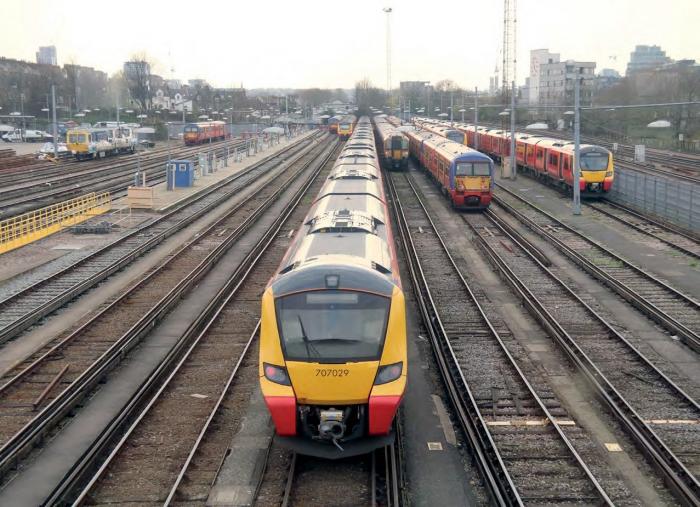New Train TIN-Watch suggests the South Western depot will take some beating



Not a lot to report this month, save for the arrival of the Great Northern Siemens Desiro City Class 717s in the Table of Truth. These are replacing Class 313s on my local ‘stoppers’ into Moorgate. ScotRail’s Hitachi Class 385 EMUs are clearly in Kaizen mode and have extended their lead over the Thameslink Class 700s. But the ‘707s’ continue to top the table.
It is worth noting that when Andy Mellors moved from Engineering Director at Great Western to Managing Director at South Western he vowed that there would be an end to South West Trains’ massaging of its reliability statistics to generate Spanner-winning performances, producing figures that some other operators considered unfeasible.
Well, with the Class 707s a smidgeon short of 100,000 MTIN for Period 13, either Wimbledon depot hasn’t got the message or perhaps the previous figures were straight – as those of us who had visited the depots believed.
Missing from this month’s table are the two Great Western 800 Series IEP fleets. While the fleet mileages have changed, in the source material the number of units and the number of TINs have stuck on the Period 11 numbers, so I have omitted these fleets for the time being. Normal service should be resumed next month with Period 1 of the new accounting year.
ANNUAL?
One of the readers who spotted the constant numbers was Richard Whitbread. He had written in to complain about my cavalier use of ‘moving annual average’ (MAA) in the table.
As he rightly pointed out, a year has 13 reporting periods. Thus, with only two results for the ScotRail Hitachi Class 385s, the MAA should be obtained by adding up the two mileages and then dividing by 13, since no mileage was run in the previous 11 Periods. On this basis the MTIN MAA has gone from 651 to 3,115 miles.
A pretty spectacular rise, but not of much use in helping a depot engineer to track the improving performance of his or her charges.
Mr Whitbread notes that he was an accountant and ‘when we say a year, we mean a year’.
In business, a true calculation could show the MAA growing for the turnover of new lines and how it compared with other product introductions and when growth would plateau. He concludes: ‘It would not be the first time that engineers see things differently’. Quite!
